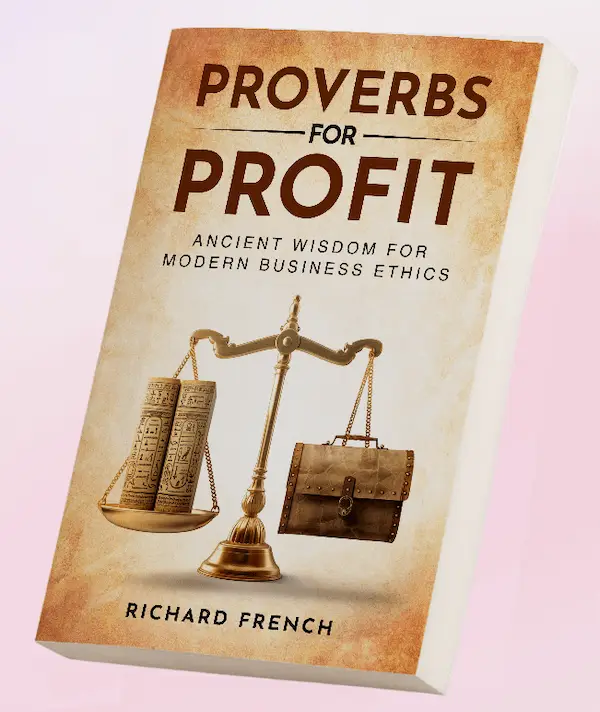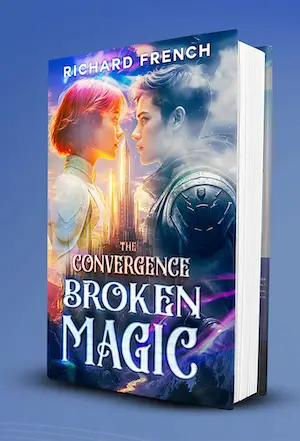When I think about making those tough professional calls, I often find myself leaning on what I like to call my “decision diary.” This isn’t just some scribble of choices I’ve made—it’s a game-changer. It helps me lay out my options, sort through my thoughts, and give decisions a solid once-over, which in turn makes me and the place I work a whole lot better.
Nowadays, it’s all about rolling with the punches and making smart choices. That’s where journaling steps in, especially when facing that gut-wrenching fear and worry that comes with decision-time (Hilary Beckwith). By tapping into what I truly want and separating the cold sweats from the clear-headed moments, my choices become both smart and satisfying (Life Coach Directory).
Mindfulness tricks like journaling have a knack for sharpening your mind and leveling up decision-making skills (LinkedIn). Doing this stuff regularly not only keeps my goals in sight, but also helps me chew over past decisions, see how they played out, and plan my next moves without missing a beat.
In this write-up, I’m gonna share some pretty handy journaling setups that tackle different parts of deciding like a pro. From the ‘think before you leap’ stage to following through and seeing where you end up, these setups give the framework to make smart, deliberate decisions. If you’re green to this whole professional journaling thing, check out our starter guide on how to start professional journaling.
By folding these ideas into my journaling routine, I can keep things neat and focus on what counts in my career path. Whether I’m mapping out a project, setting targets, or looking back to measure what I’ve done, having a trusty decision-making journal changes the game.
For more scoop on journaling tricks and tips that work, take a peek at our guides on professional journaling methods and work journal templates.
Understanding Decision Journal Basics
When I think about making better decisions, a decision journal pops into my mind as a top-notch tool. It helps me sort my thoughts, jot down my reasoning, and make sure my choices come from a place of calm, not chaos. Here’s my take on the essentials of keeping a decision journal.
Purpose of a Decision-Making Journal
A decision-making journal is like a Swiss Army knife for my brain:
- Clarity and Focus: Scribbling down my thoughts clears them up. It makes me put my priorities in black and white, steering clear of emotional chaos like fear and worry.
- Accountability: Jotting down my entire decision path makes me stand by my choices. I can revisit them and weigh my decisions with the info I had on hand.
- Analysis and Learning: Checking back over my decisions helps me catch patterns in my thinking. It lets me learn from my past goofs and wins.
Components of a Decision Journal
My decision journal usually includes these parts:
- Decision Description: I kick things off by stating the decision on my plate. This section includes the backdrop and the options waiting for me.
- Criteria for Decision: I roll out the factors and criteria crucial for this decision.
- Assumptions: I jot down any guesses I’m making about the scenario.
- Expected Outcomes: I lay out what I think will happen with each choice.
- Pros and Cons: Listing out the upsides and downsides of each option spotlights my choices.
- Final Decision: I wrap up by noting the decision I made and why.
- Reflection: After the fact, I look back at what happened versus what I thought would happen.
Example Template
Here’s a simple template I roll with in my decision journal:
| Section | Details |
|---|---|
| Decision Description | Clearly describe the decision to be made. |
| Criteria for Decision | List important factors and criteria. |
| Assumptions | Note any assumptions made. |
| Expected Outcomes | Describe expected outcomes for each option. |
| Pros and Cons | List the pros and cons for each option. |
| Final Decision | State the final decision and the main reason behind it. |
| Reflection | Reflect on the outcome compared to your expectations. |
Using a decision journal has flipped my approach to work choices. It offers a structured way to tackle tricky situations and makes sure my decisions are solid and penned down.
If you’re new to this journaling game, be sure to check out our article on how to start professional journaling and peek at various professional journaling methods to find your groove.
The Pre-Decision Guide
As someone who needs to make decisions efficiently and effectively, I’ve found having a structured guide makes all the difference. That’s where my pre-decision process kicks in. This guide helps me sort my thoughts and build a strong foundation before jumping into any decision-making.
Getting a Grip on My Goals
The first step is really understanding what I want to accomplish. I need to ask myself what’s the outcome I’m chasing. It’s all about linking my decision to my long-term plans and values (Hilary Beckwith). Am I trying to climb the career ladder, or do I just need a quick fix for an immediate issue?
Collecting the Good Stuff
Making decisions based on data means gathering and analyzing info before settling on a path (Harvard Business School Online). To make sure I’m right on track, I gather numbers like stats, reports, and performance metrics and mix them with expert opinions and stories that hit close to home.
| Data Type | Source |
|---|---|
| Quantitative | Performance Metrics, Reports, Statistics |
| Qualitative | Expert Opinions, Personal Stories |
Looking at Other Roads
Then, I mull over and jot down all the possible paths. This stage is about exploring different routes and keeping my mind open. It’s key to list these without judging them right away to dodge any bias.
- Option 1
- Option 2
- Option 3
Balancing the Good and Bad
With options in hand, I dive into the ups and downs of each. Making a pros and cons list helps me see the bright and dark sides of every choice (ScienceDirect). Writing it down also helps calm my nerves since putting it on paper can clear things up (Hilary Beckwith).
| Option | Perks | Cons |
|---|---|---|
| Option 1 | High Returns, Fast Implementation | Big Budget, Few Resources |
| Option 2 | Low Budget, Lots of Resources | Takes Longer |
| Option 3 | Cost and Time Balanced | So-so Returns, Average Resources |
Watching for Red Flags
Before jumping in, I have to spot any speed bumps, planning out how to go over them. Whether it’s money woes, work hiccups, or stress hitting hard, I’ve got to be ready (Hilary Beckwith).
Staying True to My Values
My actions need to resonate with my own and my company’s values so I can make choices that sit right with my beliefs. It’s all about making sure my journey stays true to its course.
Mapping My Moves
Once all that’s sorted, I figure out what’s next. Whether it’s chatting with others, digging for more info, or just taking the plunge, the plan needs to be clear-cut so I can move with confidence (Hilary Beckwith).
Making the Most of My Tools
Using my decision-making journal, I’ve found a couple of trusty links that help guide the way:
- professional journaling methods
- work journal template
- professional journal prompts
- meeting notes journal
- project planning journal
- goal setting journal templates
By following this pre-decision guide, I keep my decisions smooth and stress-free, making sure they align with where I want to go in the long run.
Decision Analysis Templates
Ever noticed how a little organization could change the whole game when you’re faced with tough decisions? Keeping a decision-making journal can really light up your choices. And that’s where decision analysis templates come in handy. They’re like your trusty guide, helping you lay out, mull over, and make sense of your options. So, let me share a few templates with you to spice up your journal game.
Basic Decision Analysis Template
This template strips decision-making down to the basics, making it easy-peasy. It’s like having a checklist in your pocket. Here’s a simple format I find useful:
| Decision Component | Details |
|---|---|
| Decision Description | What exactly are you deciding on? |
| Options Available | What choices are on the table? |
| Pros and Cons | Good and bad of each option – list them out. |
| Data and Evidence | Got any info or evidence backing each choice? |
| Potential Impact | What’s gonna happen now and later when you decide? |
| Final Choice | What’re you picking and why? |
Use this to make sure you’ve got the whole picture before jumping in.
Data-Driven Decision-Making Template
In the age of stats and facts (thank you, Internet!), sometimes you gotta lean on data to steer your ship. This template is more about numbers and less about gut feeling, giving your decisions that empirical oomph:
| Component | Description |
|---|---|
| Decision at Hand | What’s the decision you’re eyeballing? |
| Relevant Data | What data can’t you ignore for this call? |
| Data Sources | Where’s this all-important data coming from? |
| Analysis | What picture does the data paint? |
| Possible Outcomes | What’s likely to happen according to the data? |
| Decision | Which route does the data point you towards? |
Secure that logical, evidence-backed safety net with this one.
Advanced Decision Analysis Template
For those decisions that have more twists and turns than a roller coaster, this advanced template covers all bases:
| Component | Details |
|---|---|
| Objective | What’s the ultimate goal here? |
| Stakeholders | Who’s in the mix or might get affected by this decision? |
| Options | All the choices laid out neatly. |
| Risk Assessment | What could go wrong and why? |
| Resource Allocation | What’s the cost – time, money, people? |
| Mitigation Strategies | How do you dodge the bumpy roads? |
| Ethical Considerations | Any moral questions in here? |
| Decision | What’s the big move and your reason? |
Having this in your arsenal can help when things get tricky.
Journal Prompts for Decision Making
Want to supercharge your decision journaling? Fire up these prompts to keep your head straight:
- How does each choice benefit you?
- What skills or strengths do you have that can turn the table?
- What obstacles might crop up and how can you jump over ‘em?
- Are these choices vibing with what really matters to you?
Throw these questions into the mix, and watch your decision-making blossom.
For a deeper dive into journaling hacks, hop over to our articles on professional journaling methods and goal setting journal templates. You’ll find more tools to crank up your journaling skills to the next level.
Implementation Planning Framework
When I’m diving into professional journaling, organizing my thoughts with a solid plan helps me get stuff done right. I’m gonna share how I go from brainstorming to action, making sure every move I make gets me closer to those big career dreams.
Steps in the Implementation Planning Framework
- Define Objectives: First up, I nail down exactly what I’m striving for. I get specific, pinning my goals in a way that’s got numbers or timelines whenever possible, so it’s easy to see progress and stay inspired.
- Break Down Tasks: Next, I slice that big goal into bite-sized tasks because it’s way less overwhelming that way. Plus, checking off smaller tasks keeps me motivated.
- Set Milestones: I make checkpoints along the way to keep track of how far I’ve come and spot if I need to switch gears. It’s like having mini-celebrations on the journey to the main event.
| Task | Milestone | Deadline | Status |
|---|---|---|---|
| Define Objectives | Initial Planning | January 1 | Completed |
| Break Down Tasks | Task Segmentation | January 5 | In Progress |
| Set Milestones | Milestone Planning | January 10 | Not Started |
- Allocate Resources: Whether it’s time, money, or getting help from others, knowing what I need beforehand keeps everything running smooth. Nobody wants to hit roadblocks they could’ve avoided.
- Identify Risks: I lay out what could go wrong and have a plan B ready. This way, I’m ready to tackle any hiccups without derailing the whole plan.
- Monitor and Adjust: Keeping an eye on what’s happening at regular points means I’m always prepared to tweak the plan if something changes unexpectedly.
Internal Links for Further Reading
- Curious about breaking stuff down? Head over to my work journal template.
- Need task management ideas? Find them in professional journaling methods.
- Thinking about goal-setting? Take a look at our goal setting journal templates.
- Wanna manage risks better? Check out these reflection journal practices.
Leveraging Tools and Techniques
Journaling is a power move in making decisions and bringing them to life. Using journal prompts (Hilary Beckwith) gets me thinking deeply, playing to my strengths, and mapping out how to move forward. These prompts let me see where I stand, avoid potential problems, and carve a smart path toward my goals.
| Prompt | Purpose |
|---|---|
| Contemplating Benefits | Get clear on decision perks |
| Recognizing Strengths | Tap into my best skills |
| Identifying Roadblocks | Prep for bumps in the road |
| Planning Steps | Lay out steps to sort out issues |
| Aligning with Personal Values | Make sure my moves reflect who I am |
| Determining Next Steps | Map out what comes next |
Practical Example
Say I’m mulling over a new project—my project planning journal is my best buddy. I set my sights, outline tasks, check progress points, and figure out who or what I need. Journaling digs deep, revealing those true emotions and ensuring decisions come from a place of confidence, not fear (Life Coach Directory).
By mingling these planned-out tactics with my thoughts, my journal isn’t just a diary; it’s a powerhouse for strategy and smashing my decision-making goals.
Outcome Tracking System
Keeping tabs on your decisions is a smart way to see if they’re actually working out or leading you off-course. An Outcome Tracking System helps you check the ripple effects of your choices over time.
First off, I stick to a fixed way to jot down outcomes. This setup lists what I decided, how I’ll measure its success, and when I plan to see how it all worked out. Doing this consistently makes it a breeze to line up and judge different choices side-by-side.
Defining Success Metrics
To really judge if something worked out, I pin down clear ways to measure success. These measurements are specific and tie directly to the choice at hand. Here are some usual suspects in this lineup:
- Financial performance (like revenue growth and saving on costs)
- Timeliness in finishing projects
- Satisfaction scores from customers
- Key Performance Indicators (KPIs)
Let me show you a simple table for tracking stuff:
| Decision | Timeframe | Success Metric | Outcome |
|---|---|---|---|
| Launching New Product | Q1 2023 | Revenue Growth (%) | 15% Increase |
| Implementing CRM System | 6 Months | Customer Satisfaction | 89% Satisfaction Rate |
Recording Outcomes
Keeping a regular log of outcomes means I always have the latest scoop on how choices turned out. I usually check back on each decision when the time’s up to see its results. This part involves digging into data, surveys, and feedback linked to the choice.
Using data analysis tools helps keep things sharp. Data-driven decision-making (DDDM) leans on hard numbers to confirm whether a decision was a hit or miss (Harvard Business School Online).
Journaling Prompts for Outcome Reflection
To eke out more insights, I tap into specific journal prompts. These prompts nudge me to think about the decision made, notice what did the trick, what backfired, and plot out better moves for the future (Hilary Beckwith). Here’s a peek at some questions:
- What did I hope to get from this decision?
- What worked well and why?
- What roadblocks popped up during execution?
- How can I make better choices next time?
Utilizing Technology for Outcome Tracking
Cool tech like Clinical Decision Support Systems (CDSS) can amp up my outcome tracking game. Though originally meant for healthcare, these tools help dissect decisions systematically and have come a long way (NCBI). Merging such tech into my routine helps keep tabs tightly and dives deep in analysis.
Internal Links for Further Reading
Wanna boost your decision-making notebook? Scope out these related topics:
- goal setting journal templates
- reflection journal practices
- kpi tracking journal
- professional development journal
By keeping a close eye on outcomes, I sharpen my decision-making journal. This system not only feeds insights for future choices but also keeps me on my toes, always learning and improving in my professional journaling path.
Decision Review Framework
Alright, let’s talk about professional journaling for a minute. We all know that decisions can haunt us, right? But catching them and scrutinizing them can actually boost how well they go next time. It’s about seeing patterns, learning, and upping your game. Here’s the down-low on setting up your very own decision review framework—a sort of rewind and recap within your journal.
Framework Components
1. Decision Documentation:
Step one is writing it down—all the juicy details of each pick. This should cover:
- Decision Description: What’s the gist of this choice?
- Date and Time: Stamp it with when it happened.
- Context and Background: What was going down when you made it?
- Expected Outcomes: What were you hoping for, huh?
2. Analysis of Outcomes:
Compare what you expected with what actually happened. This involves:
- Outcome Description: Reality check—what really went down?
- Success Metrics: How do you rate it? Use numbers or good old common sense.
Here’s a little cheat sheet for capturing it all:
| Decision Description | Date and Time | Context and Background | Expected Outcomes | Outcome Description | Success Metrics |
|---|---|---|---|---|---|
3. Identification of Influences:
What tipped the scales? Knowing this reveals biases:
- Internal Factors: Personal quirks, what your brain was juggling, or team vibes.
- External Factors: Market vibes, what data you had, or company rules.
4. Reflective Prompts:
Chew on the decision a bit with these prompts:
- What rocked?
- What would I do differently next time?
- What did I miss?
- How can this up my future game?
Regular Review Sessions
To really soak up the benefits, I need to have a set review time. Maybe monthly or quarterly, based on how often I make big or little decisions.
- Monthly Review: Good for every day, run-of-the-mill decisions.
- Quarterly Review: Perfect for the big fish—strategic calls and projects.
Use these moments to dig up past calls, see where they landed, and tweak the process using any nuggets of wisdom.
Data-Driven Insights
Using data wisely can supercharge this whole framework. A nod to a PwC survey—data-driven outfits are thrice as likely to see big leaps in decision quality, compared with their less-data-savvy buddies. Putting data tools to work unveils trends and links that would otherwise lurk in the shadows.
Addressing Cognitive Biases
Watch out for those pesky cognitive biases—they can skew decisions. University of Michigan found out that working on these can hike productivity by a fifth! (Want more? Check it out on LinkedIn.) Spot these biases, log them, and they’ll stop meddling—making way for more balanced picks.
Incorporating Feedback
Feedback from your crew can shine a light on new angles and boost decision dynamics. Slot these nuggets into your journal alongside the decisions and results.
Feedback Journal Template:
| Feedback Date | Source | Key Points | Suggested Actions |
|---|---|---|---|
Internal Links for Further Reading
Looking to polish your pro-journaling skills? Check out these handy reads:
- professional journaling methods
- work journal template
- professional journal prompts
- reflection journal practices
- goal setting journal templates
By routinely following this decision review dance, I can boost my decision chops and log a trophy wall of personal and professional growth.
Advanced Decision-Making Tools
In my quest to become a decision-making whiz, I’ve tinkered with a variety of advanced tools that have really upped my game. These handy gadgets make sure my choices aren’t just shots in the dark but are based on good, solid information aligned with where I want to go professionally. Let me share a few tools and tricks I’ve found pretty darn useful.
Data-Driven Decision-Making (DDDM)
In this game, you’re letting numbers and facts do the talking. Especially when work decisions are on the line, and you need concrete results, leaning on data is a no-brainer. By looking at the cold hard facts, I’m steering my decisions away from gut feelings towards reality.
Here’s the scoop on DDDM:
- Gathering data from wherever it lives
- Sifting through trends to spot patterns
- Turning numbers into pictures using all those pretty charts and graphs
- Basing choices on what the data actually says
By weaving DDDM into my decision diary, I can check the pulse on my decisions and see how they pan out over time. For a deeper dive, check out our talk on kpi tracking journal.
Personal Health Records (PHRs)
When it comes to health vibes, Personal Health Records (PHRs) are gold. I mean, they track everything – your drug cocktail, those lab numbies, even your wearable gizmos. Staying in the loop with my doctor just got way easier (NCBI).
What makes PHRs tick:
- Keeping tabs on symptoms and meds
- Logging those lab figures
- Hooking up with wearable tech
- Boosting the doc-patient chat
This is particularly slick for handling stuff like anxiety, PCOS, and cholesterol, where knowing what’s up can steer you towards brighter outcomes (Hilary Beckwith).
Structured Journal Prompts
I love journal prompts for sorting through my brain clutter. They push me to think through each decision’s nooks and crannies, suss out stumbling blocks, and map out how to leap over them (Hilary Beckwith).
Here’s some food for thought:
- “What goodies come from this choice?”
- “What am I good at that gets me closer to my goal?”
- “What roadblocks might pop up?”
- “How do I bulldoze through these blocks?”
- “Does this jive with what I believe in?”
With these prompts, I can run through my decision-making routine with clarity.
Decision Trees and Matrices
These are like a snapshot of choices laid out with pretty visuals. A decision tree maps out the what-ifs, while a matrix stacks options side-by-side on how they match up.
Tree:
- Lays out choices and outcomes
- Spots both perks and perils
- Shows a map of which way you might take
Matrix:
- Pits options against each other
- Scores them to find a champ
- Breaks down complicated choices
Here’s how a simple decision matrix looks:
| Criteria | Option 1 | Option 2 | Option 3 |
|---|---|---|---|
| Cost | 3 | 2 | 4 |
| Time Efficiency | 4 | 3 | 5 |
| ROI | 5 | 4 | 3 |
| Total Score | 12 | 9 | 12 |
Bolt these tools onto my professional journaling methods for clearer and sharper decision-making.
Cognitive Behavioral Techniques (CBT)
Don’t let fear and stress get the best of you. Cognitive Behavioral Techniques (CBT) drop a solid anchor in choppy emotional seas. They teach you how to handle jitters and stay level-headed when choices are at play (Hilary Beckwith).
CBT essentials:
- Spotting those pesky negative loops
- Questioning bonkers beliefs
- Nailing tricks to handle anxiety and stress
With CBT in my toolkit, I dodge fear-induced decisions, leading to smarter choices.
Blending these modern tools into my decision diary means my picks are not just well-rounded but statistically sound, keeping in line with both my career and personal endeavors. For more personalized tips and techniques, snoop around our professional journal prompts.
Conclusion
Keeping a decision-making journal’s been a game changer for me. It’s like having a personal advisor whispering in my ear, helping me sort out the tangled mess of choices buzzing around my head. I’m no Einstein, but even he needed a good think now and then, right? Life Coach Directory.
Cracking open that journal regularly, along with squeezing in a few minutes of meditation, helps me figure out the difference between choices made out of crazy fear and those based on good ol’ self-trust. Life Coach Directory backs me up on this one, highlighting how understanding my feelings and gut instincts can really steer me right.
Plus, having a coach to lean on when life’s major choices hang in the balance is like having a GPS with extra features. This guidance is not just some pep talk — it’s real help that keeps my decisions glued to my long-term dreams (Life Coach Directory).
Journaling for decisions doesn’t just help me make smarter choices; it also gives me a chance to laugh at my past blunders and learn from them. If you’re curious about diving into this journaling ride, check out how to start professional journaling and professional journaling methods. Whether it’s through a work journal template, project planning journal, or goal setting journal templates, there’s a fit for just about everyone.
So, I’ve woven these little habits into my everyday grind. The upshot? Decisions that make sense and mesh with my big-picture goals, both at work and at home.
Ready to level up your writing and journaling skills? Check out my books “Write Your Way” and “The Art of Journaling” for more expert insights and techniques!







